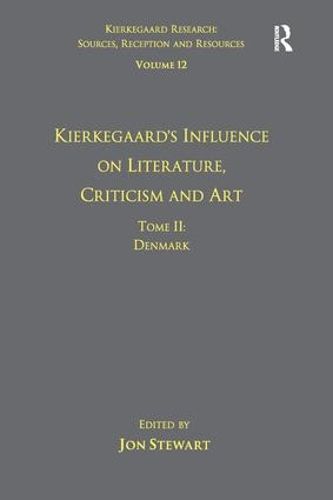Readings Newsletter
Become a Readings Member to make your shopping experience even easier.
Sign in or sign up for free!
You’re not far away from qualifying for FREE standard shipping within Australia
You’ve qualified for FREE standard shipping within Australia
The cart is loading…






While Kierkegaard is primarily known as a philosopher or religious thinker, his writings have also been used extensively by literary writers, critics and artists worldwide who have been attracted to his creative mixing of genres, his complex use of pseudonyms, his rhetoric and literary style, and his rich images, parables, and allegories. The goal of the present volume is to document this influence in different language groups and traditions. Tome II is dedicated to the use of Kierkegaard by later Danish writers. Almost from the beginning Kierkegaard’s works were standard reading for these authors. Danish novelists and critics from the Modern Breakthrough movement in the 1870s were among the first to make extensive use of his writings. These included the theoretical leader of the movement, the critic Georg Brandes, who wrote an entire book on Kierkegaard, and the novelists Jens Peter Jacobsen and Henrik Pontoppidan. The next generation of writers from the turn of the century and through the First World War also saw in Kierkegaard important points of inspiration. These included Ernesto Dalgas and Harald Kidde, who used elements of Kierkegaard’s thought in their novels. Modern Danish writers such as Karen Blixen, Martin A. Hansen, and Villy SArensen have continued to incorporate Kierkegaard into their works. There can be no doubt that Kierkegaard has indelibly stamped his name on Danish literature.
$9.00 standard shipping within Australia
FREE standard shipping within Australia for orders over $100.00
Express & International shipping calculated at checkout
While Kierkegaard is primarily known as a philosopher or religious thinker, his writings have also been used extensively by literary writers, critics and artists worldwide who have been attracted to his creative mixing of genres, his complex use of pseudonyms, his rhetoric and literary style, and his rich images, parables, and allegories. The goal of the present volume is to document this influence in different language groups and traditions. Tome II is dedicated to the use of Kierkegaard by later Danish writers. Almost from the beginning Kierkegaard’s works were standard reading for these authors. Danish novelists and critics from the Modern Breakthrough movement in the 1870s were among the first to make extensive use of his writings. These included the theoretical leader of the movement, the critic Georg Brandes, who wrote an entire book on Kierkegaard, and the novelists Jens Peter Jacobsen and Henrik Pontoppidan. The next generation of writers from the turn of the century and through the First World War also saw in Kierkegaard important points of inspiration. These included Ernesto Dalgas and Harald Kidde, who used elements of Kierkegaard’s thought in their novels. Modern Danish writers such as Karen Blixen, Martin A. Hansen, and Villy SArensen have continued to incorporate Kierkegaard into their works. There can be no doubt that Kierkegaard has indelibly stamped his name on Danish literature.